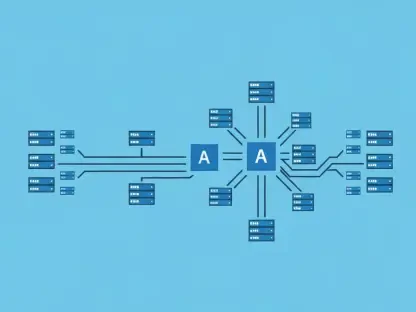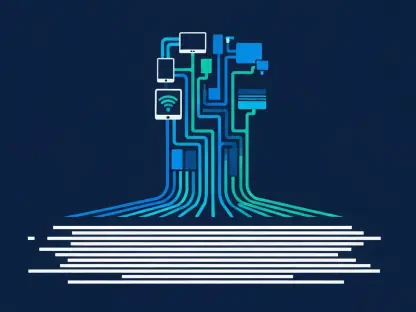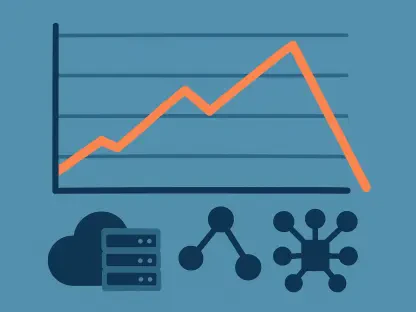In an era where public expectations for government services are higher than ever, the push for smarter, more efficient systems has become a critical priority for agencies at all levels, from state departments to federal programs. Leaders are grappling with the challenge of delivering faster, more secure, and transparent services while managing outdated infrastructure and increasingly sophisticated cyber threats. The convergence of cloud technology and artificial intelligence (AI) offers a transformative path forward, enabling public sector entities to not only modernize but to fundamentally rethink how they operate. This shift isn’t just about updating technology; it’s about embedding intelligence into every layer of government function to meet modern demands. As agencies face mounting pressures from citizens and stakeholders for real-time responsiveness, the integration of these advanced tools with deep public sector expertise is proving to be a game-changer in overcoming systemic inefficiencies.
1. Tackling Legacy Systems and Rising Expectations
Government infrastructure, often rooted in decades-old technology, struggles to keep pace with the digital demands of today’s world, where speed and accessibility are non-negotiable. Legacy systems drain significant portions of IT budgets, leaving little room for innovation while hindering scalability and cross-agency collaboration. These outdated frameworks create bottlenecks that slow down operations, making it difficult to deliver the seamless experiences that citizens now expect as standard. Beyond budget constraints, the lack of interoperability between systems means that data remains trapped in silos, preventing agencies from gaining a holistic view of their operations. This fragmentation directly impacts the ability to respond swiftly to public needs, whether it’s processing applications or addressing emergencies, and ultimately erodes trust in government capabilities.
Compounding these challenges are escalating cybersecurity risks and a persistent shortage of skilled talent in critical areas like cloud computing, AI, and data protection. Cyber threats have grown in both frequency and complexity, targeting sensitive government data with increasing precision. At the same time, the competition for qualified professionals in these fields leaves many agencies understaffed and vulnerable. The result is a vicious cycle of operational delays and inefficiencies that further strain resources and diminish public confidence. Addressing these issues requires more than patchwork fixes; it demands a strategic overhaul that prioritizes intelligent modernization to rebuild trust and enhance service delivery across the board.
2. Building a Framework for Intelligent Modernization
True transformation in the public sector goes beyond simply moving to new platforms; it requires the development of smart infrastructure that can adapt to changing needs, protect against threats, and respond in real time. Modernization without intelligence is merely a relocation of old problems to a new environment, failing to address the root causes of inefficiency. Agencies need systems designed with foresight, capable of evolving alongside technological advancements and public expectations. This is where collaboration with specialized IT solution providers becomes essential, offering the expertise and tools needed to ensure both success and speed in implementation. Such partnerships bring proven methodologies and tailored solutions that align with the unique constraints of government operations.
Key components of this intelligent approach include cloud-native upgrades, generative AI, and unified data architectures built for government use cases. Cloud solutions like AWS GovCloud and associated programs provide a secure, scalable foundation, while AI-driven automation streamlines repetitive tasks and enhances decision-making. Security remains paramount, with frameworks adhering to strict standards like FedRAMP and Zero Trust to safeguard sensitive information. These elements, supported by robust technology and decades of public sector experience, enable agencies to operate at scale under pressure while maintaining compliance with regulatory requirements, setting the stage for meaningful and lasting change.
3. Demonstrating Impact Through Real-World Applications
The tangible benefits of cloud and AI-driven transformation are already evident in various public sector initiatives, showcasing how these technologies can revolutionize service delivery. For instance, a state Department of Motor Vehicles adopted a modern omnichannel contact center solution powered by advanced tools. This implementation introduced self-service bots that handle routine tasks such as appointment scheduling and license renewals, significantly reducing call volumes for human agents. As a result, wait times for citizens dropped dramatically, while staff could focus on more complex inquiries requiring personalized attention. This shift not only improved efficiency but also enhanced the overall user experience, demonstrating the power of intelligent automation in high-demand environments.
Similarly, a Public Utility Commission has leveraged AI-enabled automation and cloud-based data systems to advance its regulatory and grid modernization efforts. By utilizing a robust cloud foundation, the agency can conduct real-time analysis of infrastructure data, improving oversight of utility operations and increasing transparency in energy programs. These improvements ensure better compliance with regulations and provide clearer insights into system performance. Far from being experimental, these cases represent fully operational successes, driven by a combination of cutting-edge technology and field-tested strategies, proving that smart modernization can deliver measurable results across diverse government functions.
4. Strategic Steps for Public Sector Advancement
Drawing from extensive experience in government modernization, a set of actionable priorities has emerged to guide agencies toward intelligent and accelerated transformation. First, adopting a modular approach to upgrades using established frameworks allows for agile, step-by-step progress. This method leverages cloud services and funding programs, enhanced by tailored public sector solutions, to ensure manageable and effective transitions. Second, deploying AI with built-in safeguards focuses on high-value applications like policy creation and digital assistance, integrating governance and compliance to maintain trust and accountability. These initial steps help agencies build momentum while minimizing risks associated with adopting new technologies.
Third, empowering the workforce with intelligent tools is critical, augmenting rather than replacing human capabilities through AI agents and automated workflows. Such solutions, seamlessly integrated with cloud-native services, enhance mission execution while supporting staff through change management. Finally, embedding security by design ensures that AI-enhanced threat detection and strict access controls are foundational to any system. Utilizing native cloud security features and Zero Trust models, agencies can protect against evolving risks from the outset. Together, these steps provide a comprehensive roadmap for public sector leaders to modernize with both intelligence and urgency, aligning technology with mission outcomes.
5. Leveraging a Powerful Technology Partnership
The strength of combining deep public sector experience with leading cloud and AI ecosystems offers a distinct advantage for government modernization efforts. With over three decades of delivery across various government domains, specialized providers bring a nuanced understanding of agency needs, paired with recognition as top-tier partners in cloud technology for generative AI capabilities. This partnership delivers compliant, secure infrastructure powered by advanced services and controls, alongside AI enablement through curated stacks designed for public sector applications. Additionally, sector-specific solutions cater to areas like public safety, education, and defense, ensuring relevance and impact.
Beyond technology, this collaboration provides financial and optimization support through structured programs and planning tools, easing the burden of transformation costs. Comprehensive services span from initial readiness assessments to architecture design, deployment, and long-term sustainment, ensuring continuity and success. While the cloud backbone offers unmatched scalability, the strategic expertise and mission focus brought by experienced partners create a blueprint for effective implementation. This synergy enables agencies to navigate complex challenges with confidence, turning modernization goals into achievable realities.
6. Redefining Public Service Through Smart Solutions
The essence of smart government lies not in the technology itself, but in the improved services it enables for citizens, employees, and leaders alike. For the public, this translates into faster, more intuitive interactions with government systems, whether applying for benefits or accessing critical information. Transparency becomes a cornerstone, as processes are streamlined and made more accessible through digital platforms. Employees, meanwhile, benefit from the automation of repetitive tasks, freeing them to focus on higher-value work while supported by intelligent tools that enhance productivity. This shift reduces burnout and improves job satisfaction across agencies.
For leaders, the adoption of smart systems provides unprecedented visibility and control over programs and platforms, enabling real-time decision-making based on comprehensive data insights. This capability is vital for addressing issues promptly and allocating resources effectively. Ultimately, the move toward intelligent government aligns with what the public expects: a responsive, accountable system that prioritizes their needs. With the right technological partnerships, this vision is not only attainable but already being realized in various sectors, setting a new standard for public service delivery.
7. Charting the Path Forward for Agencies
Looking back, the journey of public sector transformation revealed how far agencies had come by embracing cloud and AI technologies to address long-standing inefficiencies. The operational successes of various departments underscored the value of strategic partnerships that brought both technological prowess and mission-driven focus to the table. These collaborations tackled legacy challenges head-on, delivering results that reshaped public interactions with government services. Reflecting on these achievements, it became clear that the foundation laid through intelligent modernization had set a precedent for future innovation.
Moving ahead, agencies should explore tailored support from experienced technology partners to maximize the potential of AI and cloud solutions in their specific contexts. Investigating how other collaborators in the cloud ecosystem have accelerated modernization efforts can also provide valuable insights and inspiration. Prioritizing incremental steps, workforce empowerment, and security-first designs will ensure sustainable progress. By continuing to align technology with public needs, government entities can build on past successes to create a more responsive and trusted system for all stakeholders.









